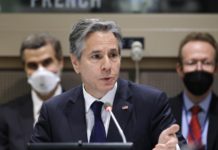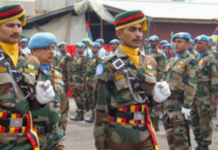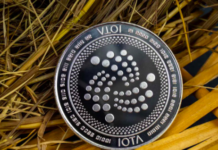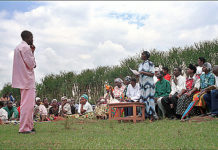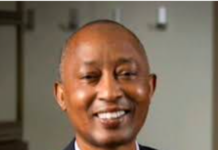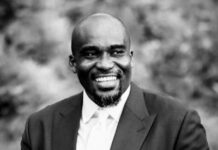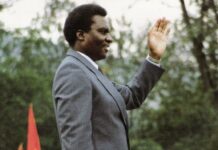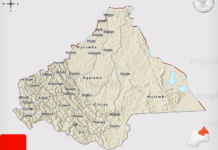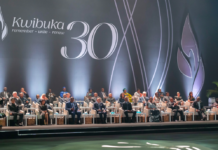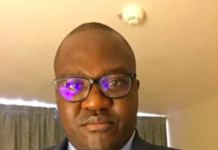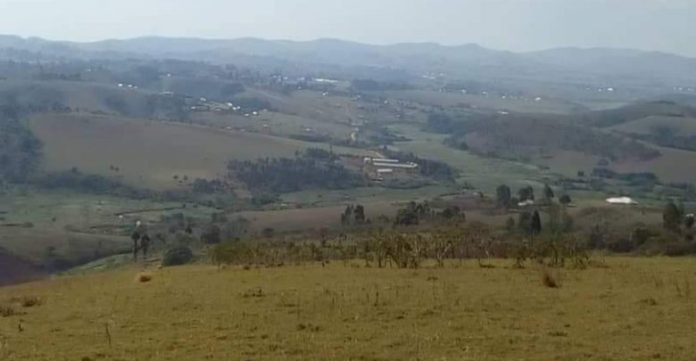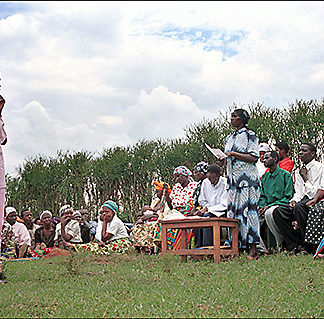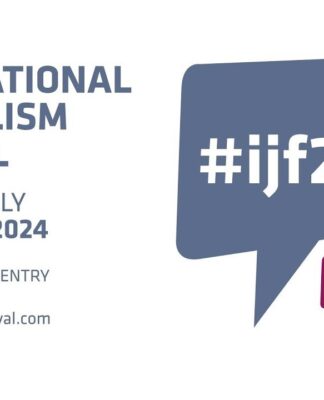Since 1996, the Banyamulenge, a Congolese Tutsi community, has repeatedly been accused by their fellow Congolese of conspiring with Rwanda to oust Zaire’s former long-standing ruler Mobutu SeseSeko from power as his tenure had been marked by rampant corruption intended to enrich himself and his cronies. As a result of this alleged disloyalty, the Banyamulenge have become scapegoats for the continuing humanitarian crisis that has plagued the Democratic Republic of Congo (DRC) for many years. Much as the Banyamulenge were seeking a regime-changing war, that would topple the long-ruling Mobutu’s tenure, Rwanda’s plan was improving itself by expropriating the natural resources of its neighbors in the Democratic Republic of Congo and, becoming what some have termed as “Africa’s economic success story.” While Rwanda’s President Paul Kagame (a self-proclaimed anti-genocide activist) sought to present himself as a champion of the Banyamulenge’scause, it is fair to say that he instead used the Banyamulenge as political pawns, solely to advance Rwanda’s economic interests. Rwanda’s lip service mission was to thwart the impending genocide aimed against the Banyamulenge, while secretly plundering DRC’s natural resources.
The south kivu-based Banyamulenge are a little-known Tutsi ethnic group that had immigrated to Congo before colonization and have close blood ties to the Tutsi from both Rwanda and Burundi. The Banyamulenge’s citizenship, however, remains hotly contested with some hardliners and influential politicians in the DRC, hyperbolically describing them as ‘the invaders from Rwanda.’ Consequently, the Banyamulenge in the Congo have been subjected to a great deal of systematic discrimination. They are stateless and have no rights. Furthermore, the recurring state-sanctioned violence has made the Banyamulenge’s position untenable and without any choice but to flee the country, prompting various influxes of refugees in neighboring states throughout the past three decades. However, in 1991, a youth squad comprising hundreds of disenfranchised and disillusioned young Banyamulenge took the matter in their own hands. They joined up with the Rwandan Patriotic Front (RPF) in a Tutsi-led rebellion in Uganda. The Rwandan refugees, under President Museveni’s tutelage, had become militarised and had been planning a war of liberation against the regime in Rwanda. The Banyamulenge’s intention was to learn how to fight, with the objective of securing a long-lasting solution to the widespread insecurity and social injustice which they had suffered since the1960s. They were, however, naive in thinking that supporting the RPF as their fellow tribe-mates, would trigger the RPF to help them back in Congo. Their gullibility was triggered by the fact that President Museveni was helping the RPF to raid Rwanda as a payback to how the Rwandans had joined his guerilla movement – the National Resistance Army (NRA)- that sprung him into power as the president of Uganda. About a quarter of the NRA fighters were Rwandan Tutsis and for their efforts, Museveni promised to help them raid Rwanda in their quest of returning back home. Thus, between 1990 and 1993, the Ugandan army supplied the RPF with provisions and weapons, in its quest to topple former Rwandan President Habyarimana’s Hutu-dominated regime. Moreover, Museveni rewarded many Rwandans with high ranks in the new Ugandan army, and also with a variety of civilian posts, despite being foreigners.
In 1994, the Banyamulenge were part of the troops that liberated Rwanda and facilitated Paul Kagame’s ascent to power after defeating the Hutu-led government that had perpetrated genocide. However, under Kagame’s watch, the RPF initiated structural impediments that were designed to subjugate the Banyamulenge perpetually. For instance, the Banyamulenge soldiers were never recognized despite their considerable contribution during the Rwandan liberation war.”We were marginalized and made second-class people,” commented Freddy Gakunzi, a Banyamulenge soldier. He went on to say, “had the then sergeant Venant Bisogo been an RPF insider, he would have been highly ranked. This is because Bisogo had killed an ex-Forces Armées Rwanda (EX-FAR) soldier, wore his uniform, and fearlessly entered the enemy’s camp, pretending to be one of them (The ex-FAR was the Rwandan army before the genocide, which fought against the RPF). He further fooled the highest-ranking official in that camp, claiming that he wanted to show him the RPF’s dwelling place. Believing him, the official found himself besieged by Tutsi soldiers through a well-prepared trap.” Staggeringly, Bisogo’s heroic deed was brushed aside. The Banyamulenge were, however, undeterred by this slight –despite making their frustration known. They continued to march nonetheless, with the primary goal being to return home.
AFDL Birthplace
As Uganda had backed Kagame in overthrowing Habyarimana’s government, the Banyamulenge expected the same from its ally. The Banyamulenge’s turn came on 23 December 1996 in Rwanda’s Butare Province. Rwandan high military officials-among them; Caesar Kayizari, Alex Kagame, and Charles Kayonga – set up a meeting with the Banyamulenge to plan how to raid the mineral-rich, cash-poor central African country. The high-ranking Rwandan officials devised a seemingly absurd proposal which the Banyamulenge categorically opposed. The motion was that the Banyamulenge should be relocated to Rwanda to be secreted in refugee camps before the DRC war began. The response of Rwandan senior military officials is encapsulated in the famous declaration: “if you do not want to work with us, Rwanda has got and will always have a thousand means to trap you.” Twenty-four years later, Kagame is still true to his word. This motto was, and still is, the blueprint of Rwanda’s destructive legacy in Congo: Rwanda has backed every Banyamulenge rebellion or fought against and even killed few who had resisted them. “It was ironic to hear someone claiming to be willing to fight for you but telling you instead to flee your motherland. From that day, we questioned them,” said Emile Rugali, one of the Banyamulenge who had attended the meeting. “We knew that their plan was not to secure us but to push us aside. Since then, they have decided to work with lamb-like individuals among us.”
In 1996, Rwanda itself trained, armed, and financed the Tutsi Banyamulenge Congolese, and in the process, introduced Laurent Kabila – a well-known figure into the Congolese political landscape. Kabila was a former warlord who had relinquished his political career to become the war poster boy of the newly formed Alliance of Democratic Forces for the liberation of Congo-Zaire (AFDL)
Kagame justified the Congo war to the still-traumatized genocide survivors, suggesting that their survival was still at stake. He insisted that if they don’t attack the genocide perpetrators who regrouped in Congo, Rwanda would soon face the second genocide. Therefore, it was branded the imperative war to defend the genocide survivors. Rwanda’s publicized motivations behind the invasion of ex-Zaire (the DRC) were twofold. The first concerned the annihilation of the alleged French-backed perpetrators of the genocidal attacks that had to regroup and were coordinating deadly cross-border raids into their homeland. The second motivation was to rescue the endangered Banyamulenge, which was on the brink of genocide, from both the ex-Zaire government and Rwanda’s genocidal former government.
In this first mission, not only did Rwanda hunt down those who had committed genocide, but also, obliterated the Hutu-dominated refugee camps, slaughtering thousands of refugees and Hutu civilians in the process. Meanwhile, the second mission was merely a smokescreen aimed at confiscating the DRC’s natural resources under the guise of the Congolese movement. Kabila, along with the Banyamulenge Tutsi, marched west towards the capital city of Kinshasa, forcing Mobutu – who had been the dictator for three decades – to flee the country on 17 May 1997. Having been appointed by Rwanda as head of state, Kabila was ordered to appoint a Rwandan general as military chief of staff, thereby abandoning the Banyamulengewho had fought alongside him. He was also ordered to leave out a few Banyamulenge civilian intellectuals in ministerial positions who had proven unbendable.
Rwanda’s subsequent missions then shifted from protecting its land from attacks by those who had perpetrated genocide to looting the abundant natural resources found in the DRC. Despite Rwanda’s historical shortage of mineral resources, its diamond exports increased from 162 carats in 1998 to 30,520 two years later. “As a soldier guarding the Kisangani airport, I witnessed two Rwandan military planes carrying only sacks of tons of gold and diamonds every day from Kisangani (DRC) to Kigali for six months. Sometimes they would round-trip like five times,” observed Fidèle Gasita, a Tutsi Congolese under Rwanda’s stewardship.
However, soon after that, Kabila became increasingly frustrated by both Rwanda’s desire to plunder the DRC’s natural resources and its continued meddling in his country’s affairs. As a result, both the Banyamulenge and Rwanda were expelled from Kinshasa. However, Rwanda continued in its pursuits. In 1999, a few weeks after being evicted, Rwanda unilaterally took control of the Congolese city of Goma, as well as both south and north Kivu and Kisangani provinces. A new political party, Rally for Congolese Democracy (RCD), was founded and was nominally led by Azarias Ruberwa – a weak, compliant Congolese Tutsi. Congo’s warring factions, including the RCD, signed the Sun City Peace Agreement (a UN-sponsored power-sharing agreement that led to a transitional government). This agreement brought an end to Rwanda’s significant influence on the RCD. Having been appointed one of the vice-presidents of the country through the Sun City Peace Agreement, Ruberwa was viewed by many as a Rwandan-backed puppet, imposed on the Congolese to advance Rwanda’s economic interests. Ruberwa tried to emerge from Kagame’s shadow and become his own man, but in so doing, he was seen by Kigali to be switching allegiance to President Kabila. Ruberwa’s stance was coupled with the Banyamulenge soldiers’ ardent disentanglement from Kigali’s web.
Additionally, Kigali’s fallout with the Banyamulenge meant Rwanda needed to find other excuses to remain in the Congo. Hence, Kagame’s regime spuriously accused the Banyamulenge of colluding with the Democratic Forces for the Liberation of Rwanda (FDLR) – an armed group comprising former Rwandan soldiers and Hutu rebels, who had fled after taking part in the 1994 genocide in Rwanda. As a result, in 2003, Rwanda commenced air attacks against its friend-turned-foe, allegedly causing the deaths of hundreds of Banyamulenge civilians. This brutal killing of the Banyamulenge was the final nail in the coffin, which saw the uneasy relations with Kigali permanently soured.
In his unmatched opportunistic machinations, Kagame adjusted his tactics to suit the circumstances. He focused on northern Kivu’s Tutsi – a new movement known as the National Congress for the Defence of the People (CNDP). It was led by Laurent Nkunda, who had once joined the transitional government, and later on, lured by Kigali. While Nkunda’s troops were gaining momentum, international condemnation and a looming embargo, compelled Kagame’s regime to dismantle the CNDP abruptly. However, Nkunda proved to be resistant. As a result, Rwanda’s government created ethnic fissures among Nkunda’s troops. For instance, Bosco Ntaganda, Nkunda’s chief of staff – against whom the International Criminal Court had issued an arrest warrant– was blackmailed into dividing his troops in exchange for being offered sanctuary in Rwanda. Ntaganda masterminded the downfall of the CNDP by dismantling his forces. Since then, Nkunda has been kept under house arrest for his alleged betrayal.
Friedrich Hegel famously said, “What we learn from history is, we do not learn anything from history.” The M23 – the Congolese Tutsi revolutionary movement – could seem to have confirmed this as accurate. This revolutionary movement, which remained answerable to Rwanda until its bitter end, was under the leadership of Rwanda’s Minister of Defence, James Kabarebe. Similarly to the CNDP , the M23 was used to advance Rwanda’s interests in eastern DRC and disregarded as soon as international pressure to stop fuelling the war, faced Rwanda. In a turn of events, however, the Banyamulenge soldiers who had joined the transitional government, fought tooth and nail against the M23; Venant Bisogo, the former Banyamulenge sergeant, was appointed by President Joseph Kabila to lead the military operation against Rwanda’s satellite.
The Current Situation
Since 2017, following their self-prophesied rhetoric of a ‘thousand means to trap you’ – by which to inflict more damage on the lives of the Congolese – Rwanda has, at the moment, ceased to be allies of the Tutsis. Instead, it has favored their enemies, to realize its ambitions. For three years, Kigali has been backing the Mai Mai rebellion group, an arch-enemy of the Tutsi Congolese. Their attacks have taken place in a region where the regular Congolese army and the United Nations Organization Stabilization Mission in the Democratic Republic of the Congo (MONUSCO) are deployed but are reluctant to prevent or stop the ongoing atrocities. Rwanda has also armed the Red-Tabara – Burundian armed forces based in South Kivu –who seek to overthrow the incumbent President Peter Nkurunziza. The Rwanda-backed Red-Tabara has carried out numerous attacks since January 2019, killing more than 150 people. Rwanda’s apparent goal is to bring the uncooperative Congolese Tutsis to their knees after a series of failed attempts to create another rebellion in Eastern Congo.
For long, the Banyamulenge have borne the brunt of Rwanda’s forays into Congo. The meddling by Rwanda, has exacerbated a feeling of resentment against them in the DRC. Their status in Congo, thus, remains precarious as they are viewed as a threat to national security because of their purported alliance with Rwanda. This is despite numerous evidence affirming that the Rwandan regime is sponsoring the Banyamulenge’s nemesis such as the Mai Mai and the Red-Tabara. Regardless, the autochthonous Congolese continue to link the Banyamulenge to the bloody and destructive legacy of Rwanda’s involvement in the Congo. They spew unprovoked hate towards them, causing untold suffering and despair. Recently across DRC, there have been ardent calls to expel them back to their ‘real’ home-Rwanda. This serialized war against the Banyamulenge, instigated by Rwanda, has as a result, seen Banyamulenge women and children are particularly affected. They are being uprooted from their homes and forced to flee their villages, as their houses are burnt and livestock stolen. The destruction of Banyamulenge villages, is seen by many as being a necessary part of a war of national liberation.
For the reasons outlined, in my opinion, it is self-evident that Kagame remains the spoiler-in-chief and his intervention in the DRC remains the significant source of problems for the Banyamulenge. The Banyamulenge’s collaboration with Rwanda in the 1990s against the Congolese regime is the reason they suffer untold atrocities and hatred in the land of their forefathers. Furthermore, Rwanda’s interests in the DRC, in terms of maintaining access to minerals and other trade revenues, have continuously affected the livelihoods and the way of life among the Banyamulenge, as they are massacred for the realization of these ambitions. The Banyamulenge have learned a harsh lesson and are committed to assuming their responsibilities as citizens. they have shown during the M23 war that they can be reliable citizens. Therefore, it is now time that every Congolese should introspectively assess why Laurent Nkunda is still under house arrest in Rwanda, why Bosco Ntaganda was taken from Rwanda, and why Colonel Jules Mutebutsi was killed in Rwanda. Further, we should deeply consider how it is possible for Rwanda, which has scarcely any coltan deposits, to be one of the world’s largest exporters of coltan.
Noah Felix Rugira



